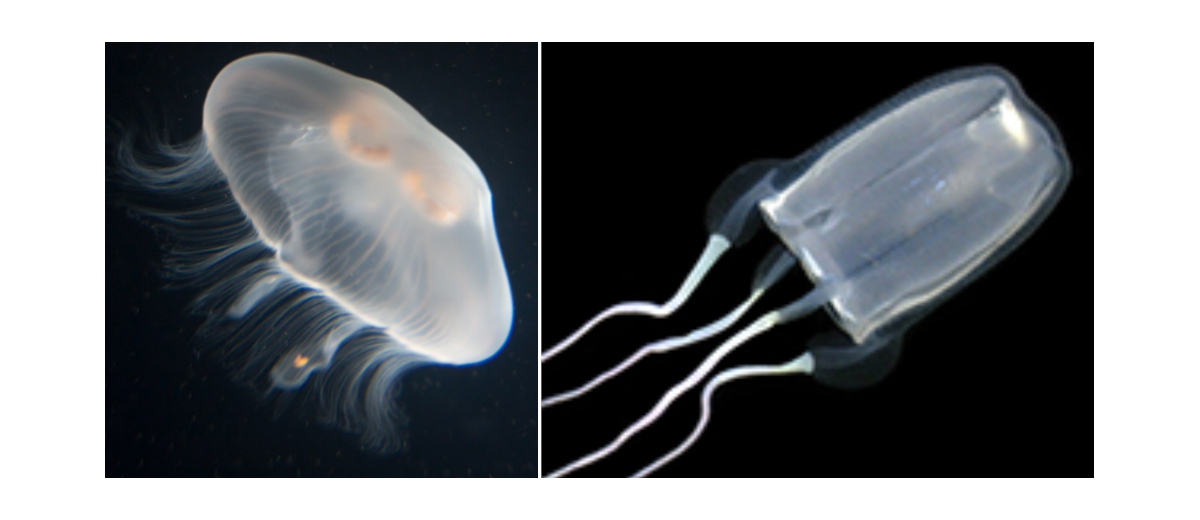©Copyright 2018 GEOSCIENCE RESEARCH INSTITUTE
11060 Campus Street • Loma Linda, California 92350 • 909-558-4548

Khalturin, K, C Shinzato, M Khalturina, et al. 2019. Medusozoan genomes inform the evolution of the jellyfish body plan. Nature Ecology and Evolution 3 (May, 2019):811-822. https://doi.org/10.1038/s41559-019-0853-y
Summary. Jellyfish and sea anemones are both classified in the phylum Cnidaria, but have different life histories. Jellyfish have a larval stage (planula) that attaches to the seafloor and later develops into the familiar swimming medusa form. Sea anemones and corals (Class Anthozoa) also attach to the seafloor, but never change into a medusa. To better understand the genetic basis for the differences between polyp and medusa stages, scientists sequenced the genomes of two types of jellyfish, Aurelia (a typical jellyfish, Class Scyphozoa) and Morbakka (a venomous box jellyfish, Class Cubozoa). They found that the two jellyfish are radically different from each other genetically, equivalent to the differences between humans and sea urchins. Further, sea anemones are as different from the two jellyfish as they are from humans. Aurelia had 400 genes not identifiable in anemones, with many of the genes active only in the medusa stage. Aurelia and Morbakka each have more than 1,000 genes specific to their jellyfish stages, but only 97 of them are the same. Polyp-specific genes were also dissimilar in comparisons of the jellyfish with the anemones. In contrast to the large genetic differences among the species studied, all the cnidarian groups have similar genes for nematocysts (stinging capsules).

Two disparate jellyfish. Left, Aurelia aurita, the moon jellyfish. Photo Rob Upchurch, CCbySA3.0. Right, Morbakka virulenta, the fire jellyfish. Photo: Khalturin et al, open source, CCbySA.
Comment. This study corroborates other studies that show the importance of taxonomic-specific genes (“orphan genes”) in producing different body plans. Since structural difference among organisms are due to differences in development, it seems probable that different body plans are largely the result of taxonomically restricted genes. It is doubtful indeed that Darwinian evolutionary processes are capable of generating coordinated sets of taxonomically restricted genes that would explain disparity of body plans. Even when most genes are similar, the timing and sequence in which they are expressed is controlled in crucial ways by taxonomically restricted genes, producing distinctively different morphologies.